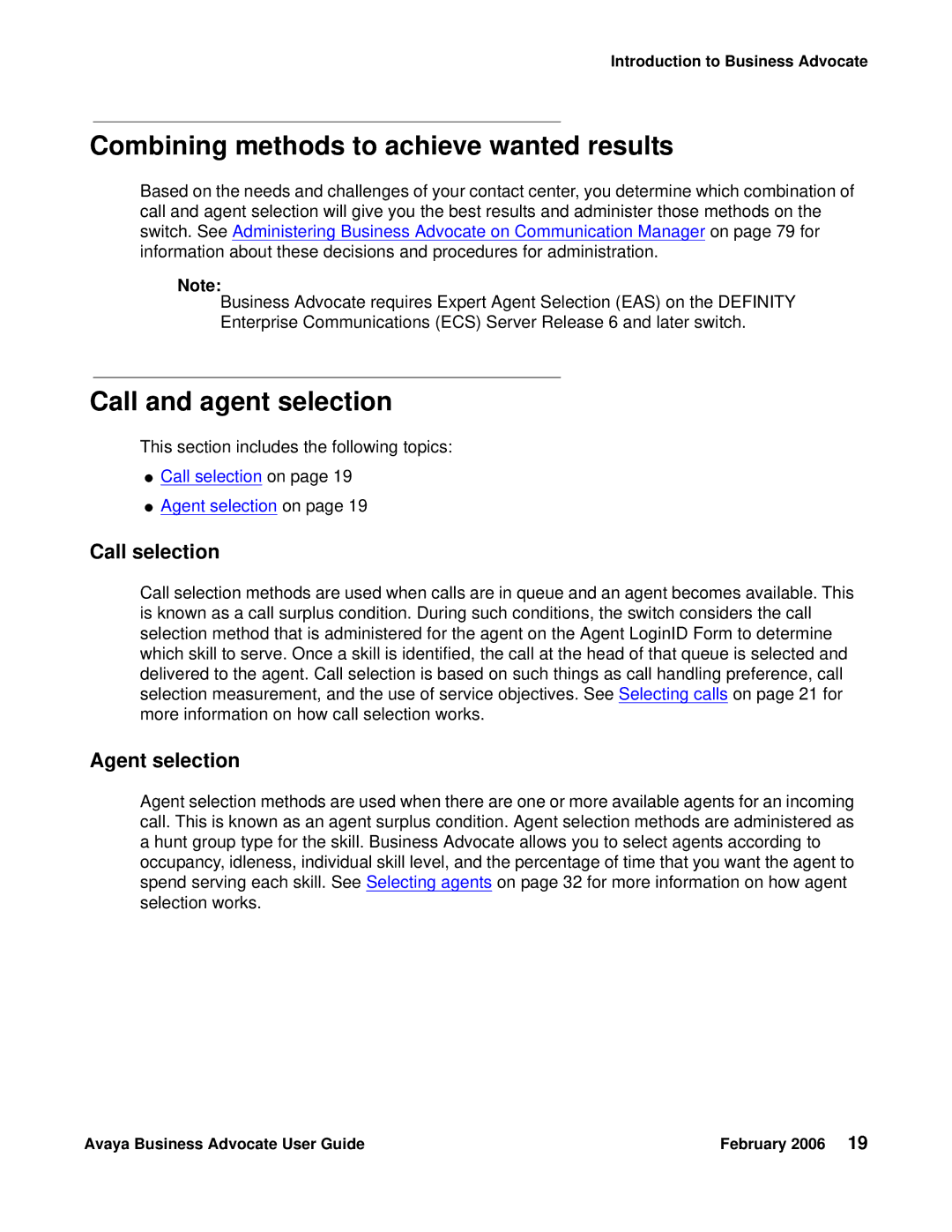
Introduction to Business Advocate
Combining methods to achieve wanted results
Based on the needs and challenges of your contact center, you determine which combination of call and agent selection will give you the best results and administer those methods on the switch. See Administering Business Advocate on Communication Manager on page 79 for information about these decisions and procedures for administration.
Note:
Business Advocate requires Expert Agent Selection (EAS) on the DEFINITY
Enterprise Communications (ECS) Server Release 6 and later switch.
Call and agent selection
This section includes the following topics:
●Call selection on page 19
●Agent selection on page 19
Call selection
Call selection methods are used when calls are in queue and an agent becomes available. This is known as a call surplus condition. During such conditions, the switch considers the call selection method that is administered for the agent on the Agent LoginID Form to determine which skill to serve. Once a skill is identified, the call at the head of that queue is selected and delivered to the agent. Call selection is based on such things as call handling preference, call selection measurement, and the use of service objectives. See Selecting calls on page 21 for more information on how call selection works.
Agent selection
Agent selection methods are used when there are one or more available agents for an incoming call. This is known as an agent surplus condition. Agent selection methods are administered as a hunt group type for the skill. Business Advocate allows you to select agents according to occupancy, idleness, individual skill level, and the percentage of time that you want the agent to spend serving each skill. See Selecting agents on page 32 for more information on how agent selection works.
Avaya Business Advocate User Guide | February 2006 19 |
